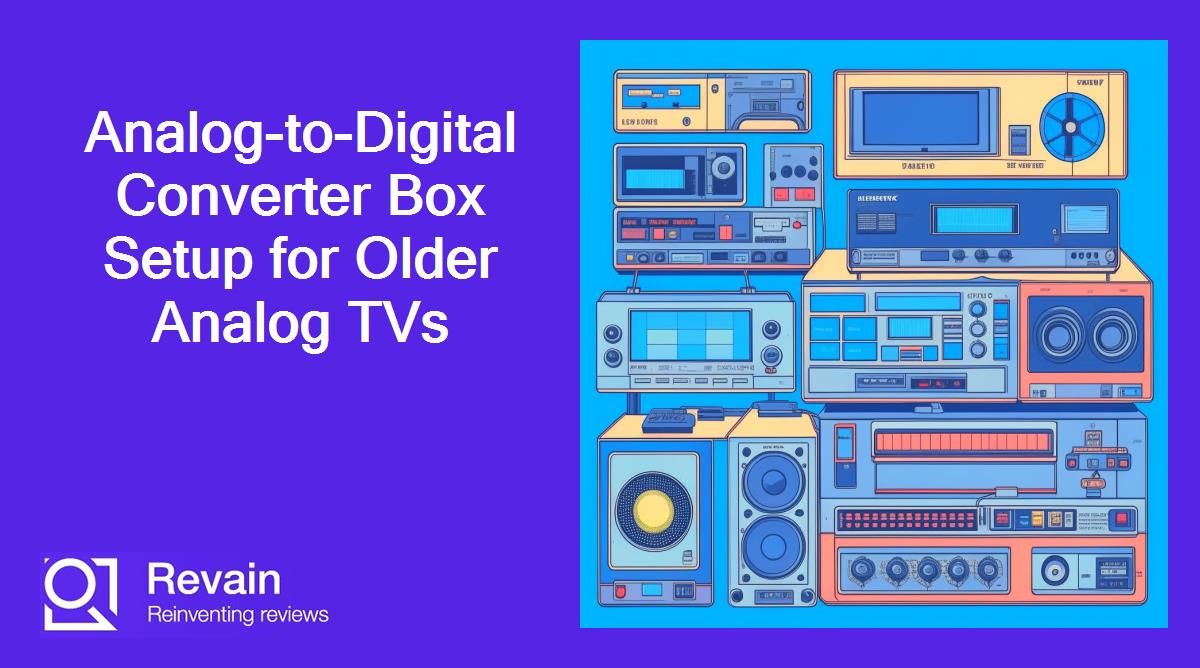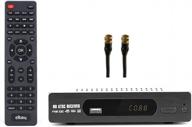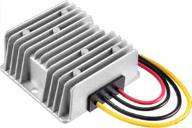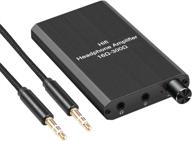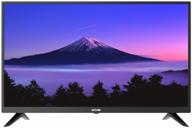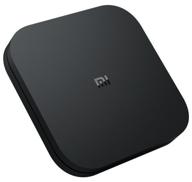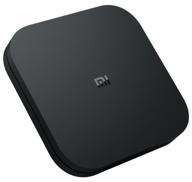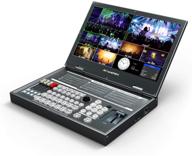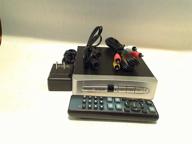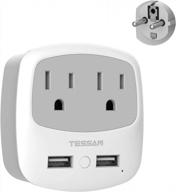Choosing the Right DTV Converter for You
The transition from analog to digital television broadcasting means that many consumers need to purchase a digital-to-analog converter box (DTV converter) to continue watching broadcast channels. With so many different models available, choosing the right DTV converter can be confusing. This guide will walk you through the key factors to consider when selecting a DTV converter.
Digital vs Analog Signal
First, it's important to understand the difference between a digital and analog TV signal. Analog signals are transmitted in waves and are more susceptible to interference. Digital signals are transmitted as binary code (1s and 0s) and provide a clearer picture and sound.
Broadcast Signal Type
There are two types of broadcast signal your DTV converter needs to be compatible with:
- ATSC (Advanced Television Systems Committee) - Used for over-the-air digital TV broadcasts in the U.S.
- QAM (Quadrature Amplitude Modulation) - Used for digital cable TV signals.
Most basic converter boxes support ATSC for over-the-air signals only. For digital cable, you'll need a converter that specifically supports QAM.
Video Connection Types
DTV converters allow you to connect your analog TV to a digital signal. The type of video output connections available on the converter will determine how you can connect it. Common output types include:
- Coaxial - Connects using a coaxial cable to your TV's coaxial input.
- Composite - Connects using RCA cables to your TV's composite video inputs.
- HDMI - Provides high-definition video and audio through one cable.
- Component - Separates video into red, blue and green component signals.
Make sure to choose a converter box with output types that are compatible with your older analog TV.
Top products in 📺 Analog-to-Digital (DTV) Converters
Added Features
Some DTV converters come with additional features that may be appealing, such as:
- Recording capabilities - Allow you to record shows to a USB or DVD.
- Electronic Program Guide - Shows channel schedules and program information.
- Closed captioning - Displays text captions for dialog or sound.
- Parental controls - Allow you to block inappropriate programs.
Consider whether these added features may be useful for you when making your selection.
Another interesting products
Budget
DTV converter boxes range in price based on their capabilities, from basic models for $40-60 to higher-end models with more features for $80-100. Determine how much you are willing to spend, but don't sacrifice essential compatibility with your TV just to save a little money.
Choosing the right DTV converter takes some research, but understanding your needs and TV setup will help narrow down the choices. Focus on finding a converter with the right compatibility, connections, and features to provide you with the best viewing experience.
Setting Up Your DTV Converter
Installing your new digital-to-analog converter box (DTV converter) to your analog TV is easy when you follow these step-by-step instructions. With the right setup, your DTV converter will enable you to receive new digital broadcasts on your older television.
Similar products
Parts Needed
Before getting started, make sure you have the following:
- DTV converter box
- Remote control (may be included with converter)
- HD antenna (for getting over-the-air signals)
- Coaxial cable
- RCA audio/video cables (optional)
Step 1 - Connect Antenna
Connect your HD antenna to the "Antenna In" port on the back of the DTV converter box using a coaxial cable. Make sure the connection is tight and secure. If you have cable TV, connect the incoming coaxial cable from the wall to this "Antenna In" port instead.
Step 2 - Connect TV
There are two ways to connect your DTV converter box to your analog TV:
- Coaxial Connection: Use a coaxial cable to connect from the "Antenna Out" or "TV Out" port on the converter box to the antenna input port on your TV.
- RCA Connection: Use composite RCA audio/video cables to connect the RCA output ports on the converter box to the input ports on your TV.
Step 3 - Power On
Plug both the DTV converter box and your TV into power outlets. Turn on your TV and set it to the video input mode you connected the converter box to (Coaxial or RCA). Turn on the converter box.
Step 4 - Run Channel Scan
Go through the DTV converter's on-screen setup menu to find the automatic channel scan function. Run a channel scan to search for and store all available digital channels being broadcast in your area.
Step 5 - Assign Channel Number
Once the channel scan is complete, you'll need to assign a channel number to each digital broadcast. Go through the on-screen menu to map digital channels to analog channel numbers your TV recognizes (like channel 7.1).
Step 6 - Connect Audio
To enable stereo audio transmission from the DTV converter to your analog TV's speakers:
- Connect RCA audio cables from the converter's "Audio Out" RCA ports to the "Audio In" ports on your TV.
- In the converter box settings, change the audio output mode to "Stereo."
Step 7 - Setup Remote Control
If your converter came with a remote, you'll need to pair it to operate the box. Follow the instructions that came with the remote to sync it to your converter.
Step 8 - Run Test
Change channels using your remote to ensure you are receiving signals properly through the DTV converter. If not, recheck the connections and adjust the antenna placement.
With these steps, your DTV converter should be fully set up and ready to receive over-the-air digital broadcasts on your analog television. Refer to the owner's manual if you need any help troubleshooting issues.
Troubleshooting Common DTV Converter Issues
Digital-to-analog converter boxes (DTV converters) provide a great way to continue using your analog TVs for digital broadcasts. However, you may run into technical problems during the setup or normal use of your DTV converter. Here are some tips for diagnosing and fixing the most common DTV converter issues.
No Signal
If your DTV converter shows no signal, try the following:
- Check antenna connections - Ensure coax cables are securely plugged into the converter box and wall jack/antenna.
- Rescan channels - Go through auto-scan function again to search for available digital channels.
- Adjust antenna position - Slightly move location of indoor or outdoor antenna to improve signal reception.
- Check signal strength - Go to signal diagnostic menu to view strength of channels coming through.
Weak Signal
For channels with a weak signal, pixelation, or frequent drop-outs, try these tips:
- Amplify signal - Install a signal amplifier inline with your coaxial cable connection.
- Upgrade antenna - If using indoor antenna, replace with a larger outdoor model.
- Elevate antenna - If outdoor, raise height and clear obstructions between antenna and towers.
No Audio
If you get video but no audio from the DTV converter, verify that:
- Volume isn't muted - Check TV and converter box volume settings.
- Audio cables connected properly - Ensure red/white RCA cables are correctly installed between converter and TV.
- Audio output enabled - Navigate to converter's audio settings to enable RCA audio out.
No Closed Captions
If your DTV converter box isn't displaying closed captions, check that:
- CC enabled on converter - Enable closed captions through converter box settings menu.
- CC enabled on TV - Also enable closed captions through your TV's settings.
- Broadcast supports CC - Try other digital channels as some may not have captioning.
No Guide Data
If your converter box is not displaying guide data like channel names, schedules, etc., try:
- Scanning for guide - Initiate guide scan function to search for and load guide data.
- Checking signal issues - Weak signal can disrupt guide data delivery.
- Power cycling box - Unplug and restart converter box to reset.
Remote Not Working
If the remote that came with your DTV converter box is unresponsive, attempt these steps:
- Check batteries - Replace remote's batteries with new ones.
- Check sensor - Ensure remote is aimed at converter's IR sensor.
- Pair remote - Re-sync remote with converter box per manufacturer instructions.
With a process of elimination and systematically working through these troubleshooting tips, you should be able to resolve any common issues with your digital-to-analog converter box. Just take it step-by-step until your DTV converter is working properly again.
Maximizing Your DTV Converter Performance
A digital-to-analog converter box (DTV converter) lets you access digital broadcasts on an analog TV. However, you may not be getting the best picture quality and signal reliability from your converter if it's not optimized. Here are some tips to maximize your DTV converter's capabilities.
Antenna Placement
Proper antenna positioning is key for getting the strongest over-the-air signal to your converter box. Try the following adjustments:
- Place near window - Position indoor antenna adjacent to window facing broadcast towers.
- Elevate outdoor antenna - Raise roof-mounted antenna above roofline and surrounding obstructions.
- Aim directionally - Point antenna towards grouped broadcast towers.
Signal Amplification
If you have issues with weak or intermittent signals, add a signal amplifier inline with the coaxial cable connecting your antenna to the converter box. Look for an amplifier rated at least +20dB gain.
Tuner Settings
Navigate your converter box's settings menu to:
- Perform auto channel scan - Updates list of channels available in your area.
- Adjust signal strength - Enables amplifier function if needed.
- Set audio to stereo - Provides better sound quality.
Connection Quality
Poor connections can degrade performance. Check that:
- Cables are tightly secured - Tighten all coaxial and RCA connections.
- Cables are high quality - Upgrade to RG6 coax and gold-plated RCA cables.
- Ports are clean - Use compressed air to clear dust from connector ports.
Software Updates
Check your converter manufacturer's website for any over-the-air software updates. Keeping firmware updated provides bug fixes and feature improvements.
With optimal placement, the best connections, and configured settings, your DTV converter will deliver top-quality HD digital programming to your analog television.
Alternatives to DTV Converters
A digital-to-analog converter box (DTV converter) lets you continue using an older analog TV to watch digital broadcasts. However, there are other options beyond DTV converters for accessing modern television programming.
Digital TV Antenna
One alternative is to purchase a digital TV antenna. These allow you to connect directly to a digital TV, without needing an intermediary converter box. A digital antenna has a built-in digital tuner to receive over-the-air high definition channels.
Smart TV
Purchasing a new smart TV with integrated digital tuning eliminates the need for a separate converter unit. Smart TVs also provide access to internet streaming apps for services like Netflix, Hulu, Disney+, etc. Newer smart TV models can be found for relatively inexpensive prices.
TV Streaming Device
Media streamers like Roku, Amazon Fire TV, Apple TV, etc. offer an easy way to stream shows over an internet connection. You simply connect the small device to any TV with an HDMI input. Streaming boxes offer more apps and flexibility compared to many built-in smart TV platforms.
DVR Service
A digital video recorder (DVR) service through a cable or satellite provider enables accessing digital recording and live TV features without a converter box. The DVR connects directly to the provider's feed and your WiFi network.
Live TV Streaming
Services like YouTube TV, Hulu Live, fuboTV and others let you stream live broadcasts from major cable channels over the internet. You can access the services from smart TVs, phones, tablets, computers, and streaming devices.
While DTV converters provide the most basic digital access, new televisions, streaming gadgets, and internet TV services offer more viewing options without the need for any converter setup. Determine your budget, programming needs, and setup to decide the best converter-free alternative for your situation.
How to use your Amazon Prime to buy Analog-to-Digital (DTV) Converters
With an Amazon Prime membership, you can take advantage of free fast shipping and other benefits when purchasing a digital-to-analog converter box (DTV converter) for your analog TV.
Find Compatible DTV Converters
Use Amazon's search bar to look for "DTV converter" or "digital to analog converter box." This will display DTV converter options that are compatible with Prime shipping.
Check product listings closely to ensure the DTV converter supports the digital signal type (ATSC for over-the-air, QAM for cable) and video connections (coaxial, composite, HDMI) you need for your analog TV setup.
Add to Cart with Prime Badge
When you've found a compatible DTV converter, add it to your cart. Look for the "Prime" badge under the price, indicating the product is eligible for Prime free shipping and returns.
Check Out with Prime Shipping
Proceed through checkout, confirming your shipping address. Make sure your Prime membership is selected under payment options. This will ensure FREE One-Day, Two-Day, or Same-Day delivery depending on your location.
Track Shipment Progress
Use your Amazon account to track the shipping status of your ordered DTV converter. Prime orders come with real-time delivery updates so you know exactly when to expect your package.
Set Up DTV Converter
Once your DTV converter arrives, follow the included instructions to connect and configure it for your analog TV. Perform an initial channel scan to pick up digital broadcasts in your area.
Return if Needed
If you have any issues getting your DTV converter to work properly, take advantage of Amazon's free returns on Prime items. Rebox the converter and print a return shipping label from your Amazon account.
With Prime delivery, easy returns, and a wide selection, purchasing digital-to-analog converter boxes through Amazon is both convenient and risk-free.
The Best Analog-To-Digital Converters For Your TV
Analog-to-Digital (DTV) Converters are devices that allow analog TVs to receive digital television signals. If you're looking to upgrade your TV viewing experience, here are some of the best Analog-to-Digital (DTV) Converters available:
- Ematic AT103B Digital Converter Box with LED Display and Recording Capabilities
- HDTV DTV Digital Converter Box with Long Range Amplified Outdoor Antenna
- Mediasonic HW-150PVR HomeWorx ATSC Digital TV Converter Box with Media Player and Recording PVR Function/HDMI Out
- ViewTV AT-263 ATSC Digital TV Converter Box and HDMI Cable w/ Recording PVR Function / HDMI Out / Coaxial Out / Composite Out / USB Input
- Mediasonic HW-560AN HomeWorx ATSC Digital TV Converter Box with Media Player and Recording PVR Function/HDMI Out
- Zinwell ZAT-970A Digital to Analog TV Converter Box (for Antenna Use)
These Analog-to-Digital (DTV) Converters come with different features such as recording capabilities, media players, and amplified antennas. Choose the one that best suits your needs and enjoy high-quality digital TV.
What Are The Features To Look For In An Analog-To-Digital Converter For Your TV??
Analog-to-Digital Converters (ADCs) are essential components in modern electronic devices. They are responsible for converting analog signals, which are continuous and infinitely variable, into digital data, which is discrete and quantized. If you're looking for an Analog-to-Digital Converter for your TV, here are some features to consider:
- Sampling rate: The sampling rate determines how often the ADC samples the analog signal. A higher sampling rate means a more accurate representation of the original signal.
- Resolution: The resolution of an ADC determines the number of bits used to represent the digital signal. A higher resolution means a more accurate representation of the original signal.
- Input voltage range: The input voltage range determines the range of voltages that the ADC can accurately convert. Make sure the ADC you choose can handle the voltage range of your analog signal.
- Signal-to-noise ratio (SNR): The SNR is a measure of the quality of the digital signal. A higher SNR means a better quality signal.
- Total harmonic distortion (THD): The THD is a measure of the distortion introduced by the ADC. A lower THD means a more accurate representation of the original signal.
- Recording capabilities: Some ADCs come with recording capabilities, allowing you to record digital TV programs for later viewing.
Overall, when choosing an Analog-to-Digital Converter for your TV, consider the features that are most important to you and make sure the ADC can handle the voltage range of your analog signal.






